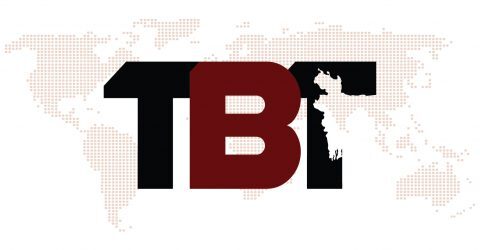
SHAFIUL KAYES : The use of technology products is increasing every day, along with the amount of e-waste. E-waste is also known as Waste Electrical and Electronic Equipment (WEEE). E-waste is a growing concern globally due to the rapid pace of technological advancement and the increasing use of electronic devices in various aspects of daily life. E-waste is also increasing risk in the country. It is one of the worrisome causes of health hazards as well as environmental imbalance.
The improper disposal and management of e-waste is posed environmental and health hazards. Bangladesh, with its burgeoning technology market, faces difficulties in coping with the escalating e-waste problem. Informal recycling practices, prevalent due to the lack of proper infrastructure, further contribute to environmental pollution and health risks for those involved in dismantling electronic devices
This category of waste includes items such as computers, laptops, smart phones, tablets, printers, televisions, and other electronic gadgets that have reached the end of their useful life.
According to the Department of Environment, Bangladesh, in 2035 e-waste will stand at 46-lakh tonnes per annum. E-waste is generated in three ways in the country. Initially, after usage and expiration, dispose of it. Secondly, electrical equipment brought into the country through expatriates or migrant workers and thirdly, used and old electrical equipment brought illegally from developed countries.
Over the last several decades, Bangladesh has experienced an incredible increase in the use of electronic components, microchips, and automated machinery in a number of household appliances, office equipment, transportation systems, and industrial tools and gadgets.
Global e-waste production was estimated to be 53.6 million metric tons (MMT) in 2019; by 2030, it will have surpassed 74.7 MMT. An estimated 3 million metric tons (MMT) of e-waste, including shipbreaking yards, are produced annually in Bangladesh.
E-waste poses a significant environmental threat due to the presence of toxic substances such as lead, mercury, and brominated flame retardants. Improper disposal, often through burning or land filling, results in the release of harmful pollutants into the air, soil, and water. This contamination adversely affects ecosystems, endangers human health, and contributes to air and water pollution. Additionally, the disposal of electronic devices contributes to resource depletion and energy consumption, further intensifying the environmental impact. Efforts to address this issue include responsible recycling practices, regulatory measures, and promoting a circular economy to minimize the adverse effects of e-waste on the environment.
As previously mentioned, hazardous substances that are harmful to human health can be found in electronic waste, including barium, lithium, polybrominated flame retardants, lead, mercury, and cadmium. These poisons harm the skeletal system, liver, kidney, heart, brain, and other parts of the human body. It can also have a significant impact on the human body’s neurological and reproductive systems, which can result in illness and birth abnormalities. Spreading awareness of this escalating issue and its potentially disastrous consequences is crucial because improper disposal of e-waste poses an incredible risk to the environment. It’s critical to properly e-cycle items so they can be recycled, refurbished, resold, or reused in order to prevent the negative impacts of e-waste.
The Bangladesh government has recognized the importance of addressing e-waste and has taken steps to implement formal e-waste management initiatives. These measures include guidelines for proper disposal and recycling of electronic waste. Currently, Bangladesh lacks a specific environmental act, policy, or set of guidelines for dealing with the issue of e-waste. Despite the Environment Conservation Act in 1995 has led to the development and amendment of a draft regulation on “E-waste management rules” in 2011 and 2017, respectively, there has been no apparent progress in the acceptance or implementation of the rules as of yet.
Informal or unregulated e-waste recycling practices are prevalent in many parts of Bangladesh. These practices often involve the manual dismantling of electronic devices, exposing workers to hazardous materials without proper safety measures. Efforts have been made to establish e-waste recycling facilities that adhere to environmental and safety standards. Various awareness programs have been conducted to educate the public and businesses about the proper disposal of electronic waste and the potential environmental and health hazards associated with improper handling.
Bangladesh has collaborated with international organizations and received support for implementing sustainable e-waste management practices. For the most recent and accurate statistics on e-waste in Bangladesh, including the amount generated, recycled, and the effectiveness of management practices, it is recommended to refer to official reports from government agencies, environmental organizations, or international bodies involved in e-waste monitoring and management.
Globally, e-waste is a growing concern due to the increasing use of electronic devices and their relatively short lifespans. E-waste contains hazardous materials, and improper disposal can have adverse effects on the environment and human health. To reduce e-waste, people must be made aware of it. Most people do not know what is e-waste? How it is harming our environment and health. In this case, the harmful aspects of e-waste should be promoted. Media can play the biggest role in this regard. The overall cooperation of the government is essential. The risk of e-waste continues to increase due to lack of proper policy on e-waste, apathy of administration, above all lack of awareness about the harmful aspects of e-waste.
The writer is a sub-editor at The Bangladesh Today




